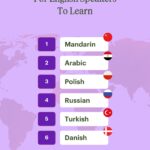Understanding how you learn best can significantly enhance your study experience and overall academic performance. Everyone absorbs information differently, and recognizing your dominant learning style is the first step towards tailoring your learning strategies for optimal results. In this article, we’ll delve into two common learning styles: visual and tactile, to help you determine what sort of learner you are and how to leverage your strengths.
Visual Learners: Learning Through Sight
If you find yourself drawn to images, diagrams, and written words, you might be a visual learner. Visual learners grasp concepts most effectively when information is presented in a visual format. They often think in pictures and have a strong sense of spatial awareness. For visual learners, seeing is truly believing and understanding.
For visual learners, strategies that engage sight are incredibly beneficial. Here are some techniques you can incorporate into your study routine:
- Utilize Flashcards: Flashcards are excellent tools for memorizing vocabulary, formulas, or key concepts. The act of seeing and reviewing the information on cards reinforces learning.
- Visualize Information: Actively try to picture concepts in your mind as you learn them. Create mental images or movies of what you are studying to strengthen retention.
- Note-Taking and Writing: Writing down keywords, ideas, and instructions is crucial. The physical act of writing and seeing the words on paper aids in understanding and recall.
- Draw and Diagram: Transform complex information into visual representations. Use diagrams, charts, mind maps, and drawings to explain new concepts to yourself. Explaining these visuals further solidifies understanding.
- Color-Coding: Use different colors to highlight key information in notes or textbooks. Color-coding helps to organize information visually and makes it easier to locate and remember specific details.
- Minimize Distractions: Visual learners are particularly sensitive to visual distractions. Study in a clean, organized, and quiet environment free from visual clutter to maintain focus.
Tactile Learners: Learning Through Touch and Doing
Tactile learners, also known as kinesthetic learners, learn best by doing and experiencing things physically. They prefer a hands-on approach and connect with information through movement, touch, and physical activity. If you learn by doing, building, or moving, you likely have a tactile learning style.
Tactile learners thrive when learning involves physical engagement. Here are effective strategies for tactile learners:
- Active Studying: It’s perfectly acceptable to move while studying. Chewing gum, walking around, or gently rocking can actually enhance focus and information processing for tactile learners.
- Manipulative Flashcards: Go beyond simply reading flashcards. Arrange them in groups, physically sort them to show relationships between ideas, and handle them frequently.
- Finger Tracing: For spelling and memorization, trace words with your finger. This tactile feedback reinforces learning through muscle memory.
- Frequent Short Breaks: Tactile learners benefit from movement. Take frequent, short breaks during study sessions to move around and refresh your physical energy.
- Fidgeting is Fine: Tapping a pencil, shaking your foot, or holding an object can be a way for tactile learners to maintain focus and process information. Embrace these subtle movements.
- Technology with Touch Input: Utilize computers and tablets for learning. The tactile interaction with keyboards, touchscreens, and styluses can reinforce learning through the sense of touch.
Beyond Labels: Embracing a Flexible Learning Approach
It’s important to remember that while understanding your learning preferences like visual or tactile can be insightful, labeling yourself strictly as one type of learner can be limiting. The most effective learning often involves a blend of different styles.
As you progress in your educational journey, especially in higher education, explore various academic skills and learning methods. Experiment with different techniques from both visual and tactile approaches, and discover what combination works best for you in different contexts. Being adaptable and utilizing a range of learning strategies will make you a more versatile and successful learner in the long run.
Ultimately, understanding what sort of learner you are is about self-awareness and leveraging your strengths while remaining open to new ways of learning and growing.
